San Francisco and the Golden Gate
September 8, 1994
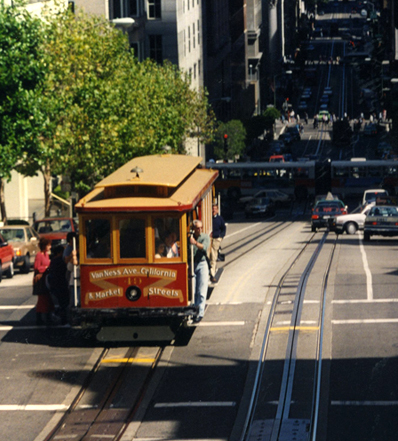 We flew to San Francisco for Brenda's national meeting of the American Association for Continuity of Care. Since she was national President-Elect, she had a room provided in the Fairmont Hotel in downtown San Francisco, the headquarters hotel for the meeting. It was a good opportunity for us to explore San Francisco. Sure enough, the streets are very steep, and cablecars run up and down California Street with people hanging out the sides. We were right in the midst of some of the famous buildings of the San Francisco skyline, like the Transamerica Tower at right. |
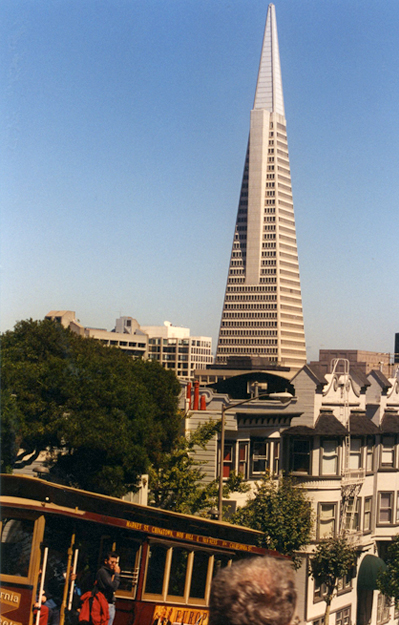 |
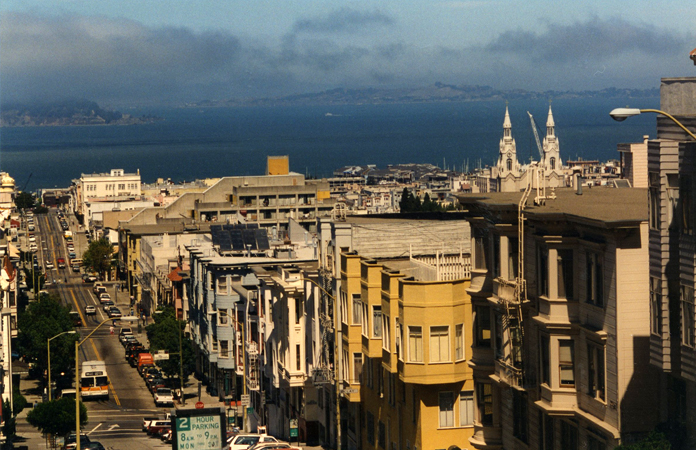 |
This is a view northward down Mason Street from the front of the Fairmont Hotel. It was nice to step out the front door and see the bay. We could also see the twin steeples of the St. Peter and Paul Church. |
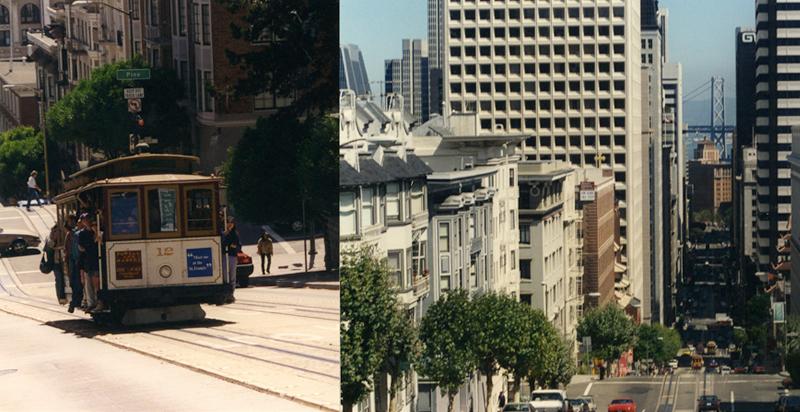
At left above, the streetcar is coming up California Street beside the hotel. Looking down California Street in the view above right, you can get a glimpse of the Bay Bridge.

This map shows the main area that we explored. The Fairmont Hotel is located at about the end of the word "Downtown" on the map above.
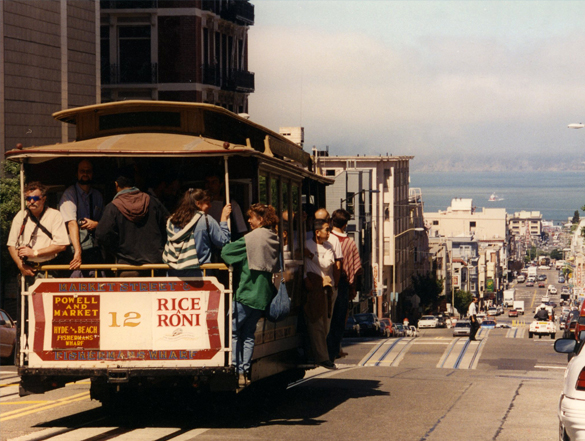 |
This is the streetcar on Powell Street behind the Fairmont Hotel. The streetcars are heavily used and seem to work very well. You can see down Powell Street all the way to the Bay. |
After checking in at the hotel, Brenda plunged into preparation for the meeting, and Rod hopped a Grayline tour of the city to do reconnaisance for later exploration. This is the Mission Dolores, the oldest standing structure in San Francisco. It was part of the tour. |
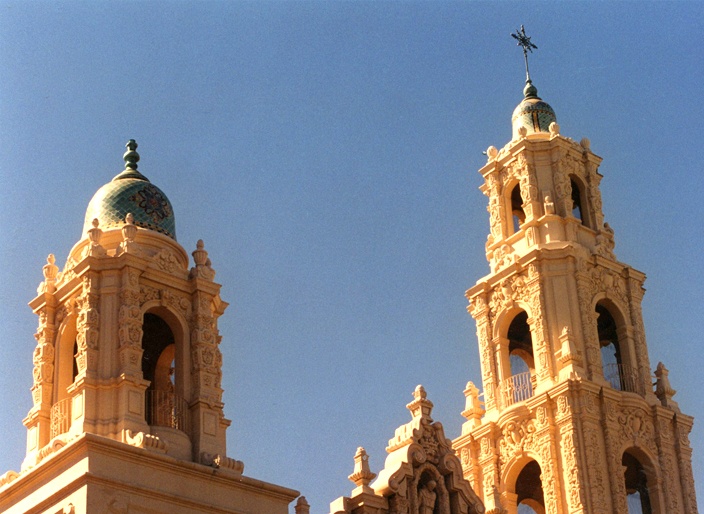 |
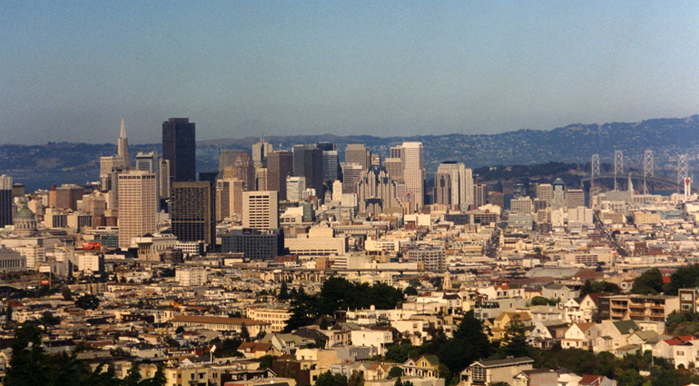 |
The tour took us to Twin Peaks, from which we had a good view of the downtown area. It gave me the reference frame of the Bay Bridge on the right and the peak of the Transamerica Tower on the left. |
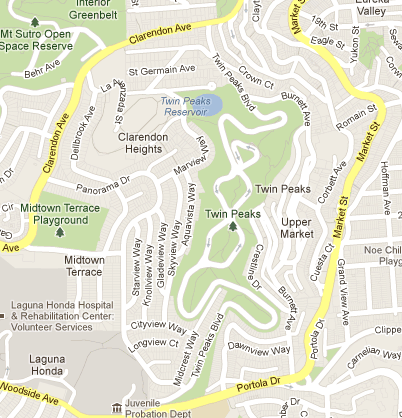 |
The Twin Peaks were a neat place from which to view San Francisco. 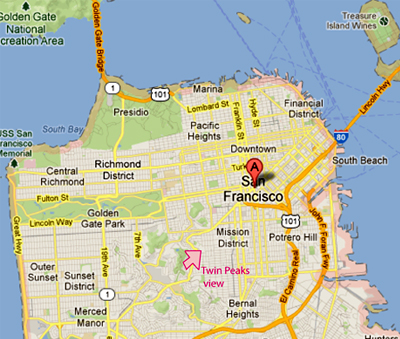 |
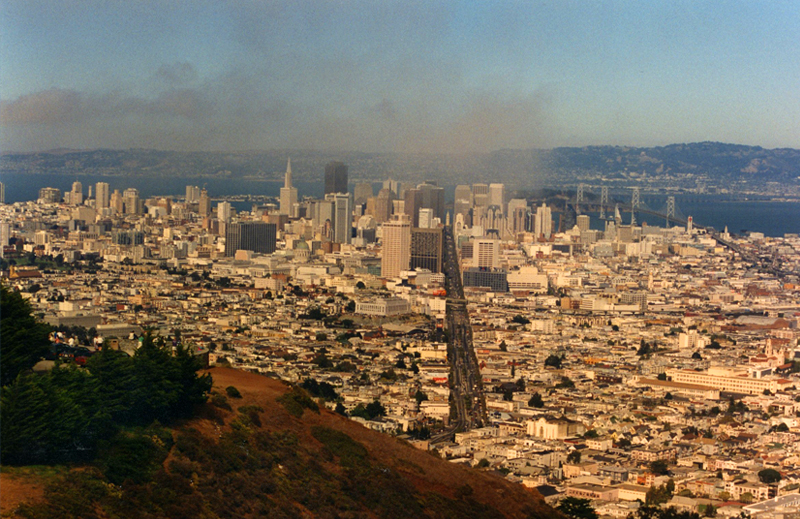
This view from Twin Peaks is straight down Market Street to the Bay.
 |
 |
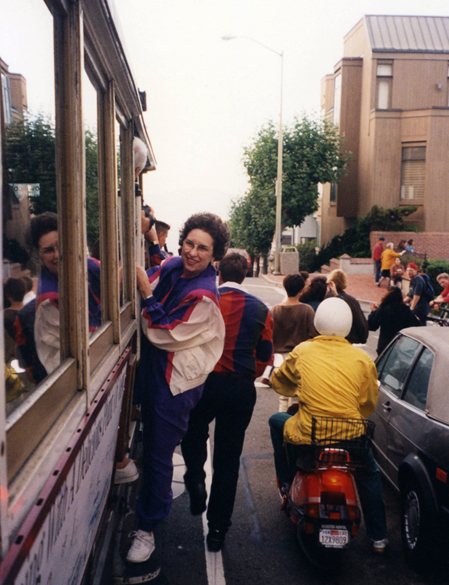 |
The tour took me across the Golden Gate Bridge, and this is a view back southward at the bridge from the Vista Point on the north end. The fog had rolled in on the bridge, but it was interesting to see the volume of afternoon traffic on the bridge. Upon my return, I hopped the trolley northward on Hyde Street toward the Bay where that line ends near Fisherman's Wharf. After Brenda finishes some of her meeting preparation duties, she gets in the San Francisco spirit and hops a cable car. |
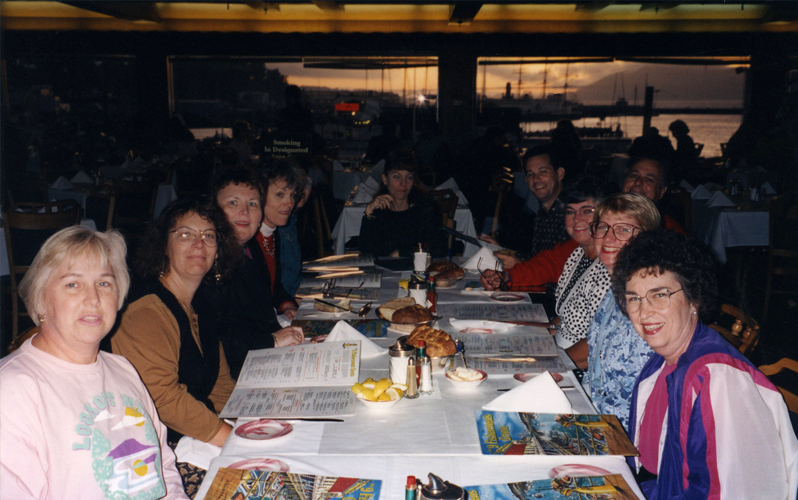
After the first day of meeting preparation, the AACC leadership group gathers at a restaurant in Fisherman's Wharf for dinner. Clockwise from left, Lois Pabst, current AACC President, Darlene Saler, Kathy Reilly, Barbara Lutz, ?, ?,Louis Feuer, Ned Russell, ?, Laura Cheny Krause, Brenda.
September 9, 1994
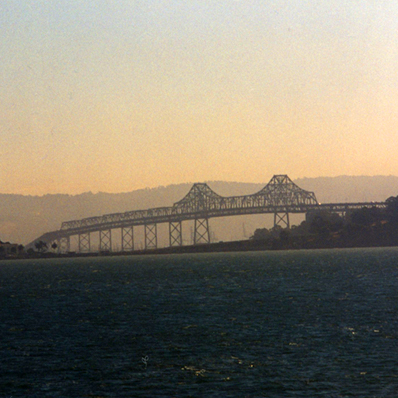 |
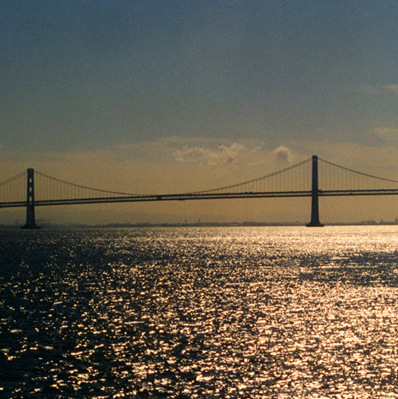 |
I was out early and went to Pier 39 from which I could get views of both the Oakland section of the Bay Bridge and part of the suspension section of the Bay Bridge on the side toward Verba Buena Island in the early morning sunshine.
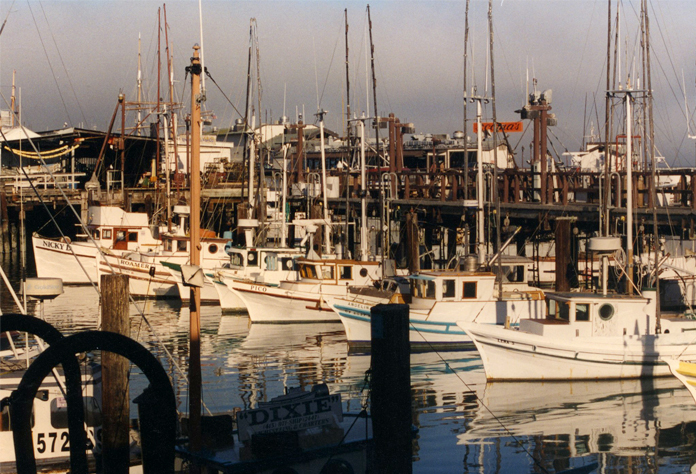 |
Early morning view of Fisherman's Wharf. We booked a boat tour of the Bay for just $15 and were soon out on the water. |
From the boat tour, looking almost due west, we see a stretch of the downtown area from the Transamerica Tower to Telegraph Hill with Coit Tower. |
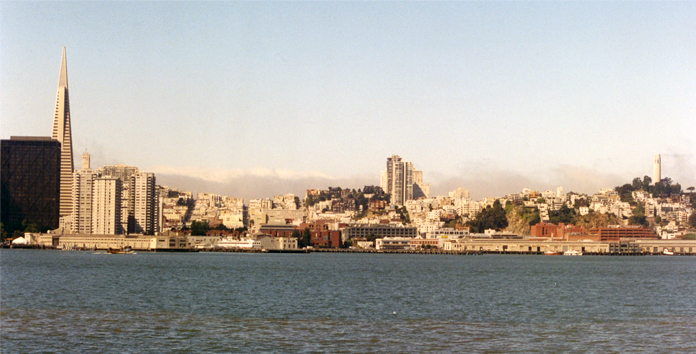 |
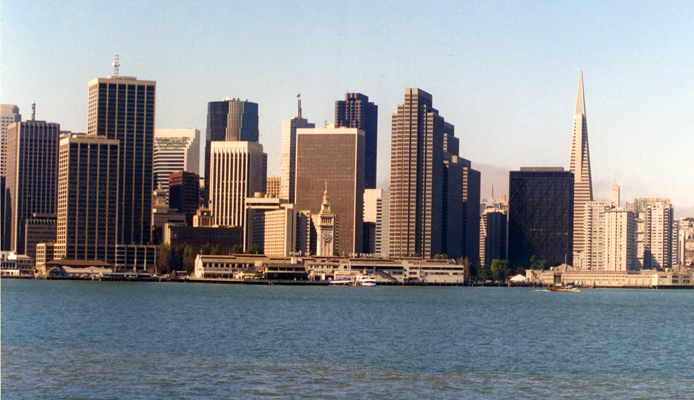 |
A view of the Financial District from the tour. Right in the middle is the Port of San Francisco with its relatively short tower. |
The sharp Transamerica Tower or Transamerica Pyramid at the right of the view above "is the tallest skyscraper in the San Francisco skyline and one of its most iconic. Although the building no longer houses the headquarters of the Transamerica Corporation, it is still strongly associated with the company and is depicted in the company's logo. Designed by architect William Pereira and built by Hathaway Dinwiddie Construction Company, at 260 m (850 ft), upon completion in 1972 it was among the five tallest buildings in the world."(From Wikipedia)
| Another tour boat passes between us and Alcatraz. |
 |
Alcatraz Island, located 1.5 miles offshore in the San Francisco Bay, was a famous maximum security prison from 1933 to 1963. Referred to as "The Rock," it housed famous mob figures such as Al Capone and other criminals who were considered a security risk elsewhere. One famous prisoner was Robert Stroud, the Birdman of Alcatraz, whose story was told in a book and movie by that name. Alvin "Creepy" Karpis was the longest term inmate, serving 26 years there.
 |
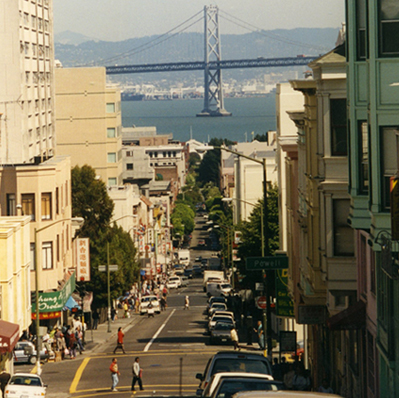 |
There was a lot of local humor about the crookedness and steepness of the streets in San Francisco. At left above there is a straight street in the distance toward the bay and Verba Buena Island, but it wanders all over this hill in getting down to the straight part. Lombard Street heads left here, then back right, and is so crooked going down the hill that it has a 5 MPH speed limit and campers are prohibited. It claims to be the crookedest street in the world, and I came home with a T-shirt celebrating it. Many streets go steeply downhill to the Bay like the street above right.
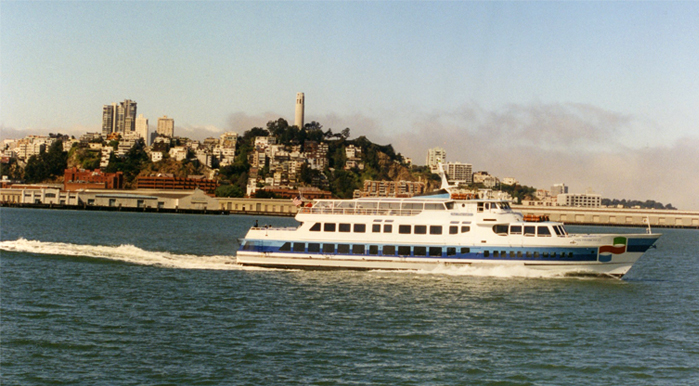 |
A sleek tourboat glides between us and Telegraph Hill and the Coit Tower. |
"The pole-and-arm signals on the Telegraph Hill semaphore became so well known to townspeople that, according to one story, during a play in a San Francisco theater, an actor held his arms aloft and cried, "Oh God, what does this mean?," prompting a rogue in the gallery to shout, "Sidewheel steamer!," which brought down the house."
"With the advent of the electrical telegraph in 1862, the system quickly became obsolete and was eventually dismantled, but the hill and its surrounding neighborhood have retained the name of Telegraph Hill. Telegraph Hill is now registered as California Historical Landmark #91, marking the location of the original signal station."(From Wikipedia)
A closeup view of Telegraph Hill and the Coit Tower. |
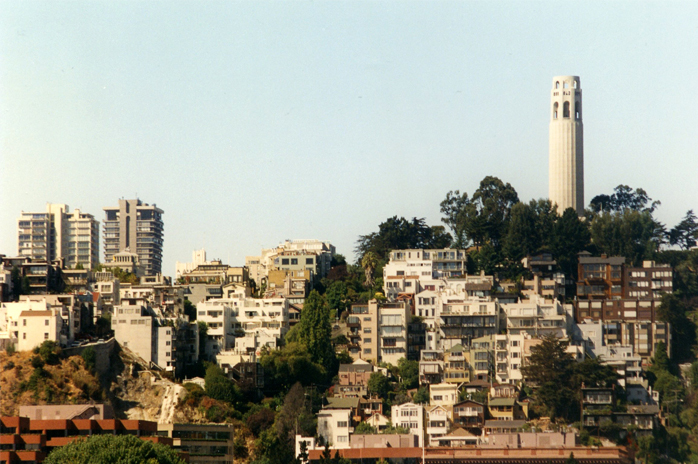 |
"Coit Tower, also known as the Lillian Coit Memorial Tower, is a 210-foot (64 m) tower in the Telegraph Hill neighborhood of San Francisco, California. The tower, in the city's Pioneer Park, was built in 1933 using Lillie Hitchcock Coit's bequest to beautify the city of San Francisco; at her death in 1929 Coit left one-third of her estate to the city for civic beautification. The tower was proposed in 1931 as an appropriate use of Coit's gift. It was added to the National Register of Historic Places on January 29, 2008."
"The art deco tower, built of unpainted reinforced concrete, was designed by architects Arthur Brown, Jr. and Henry Howard, with fresco murals by 27 different on-site artists and their numerous assistants, plus two additional paintings installed after creation off-site."(From Wikipedia)
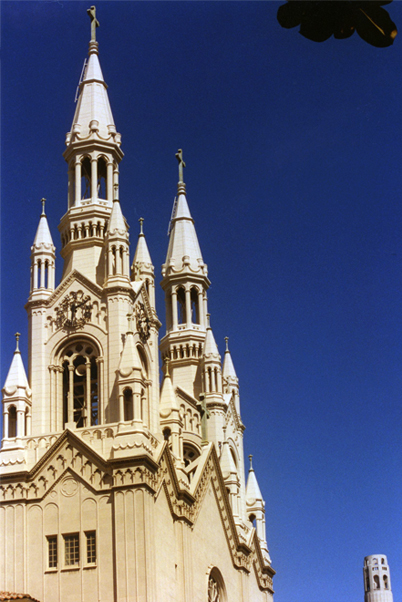 |
Back on city streets after the morning boat tour, we went by St. Peter and Paul Church. The twin spires make a distinctive landmark, and we could see the church from Mason Street in front of our hotel. It has served the Italian-American community and in recent years the Chinese-American community. You hear comments about its address, which is 666 Filbert Street. It is in the North Beach neighborhood. 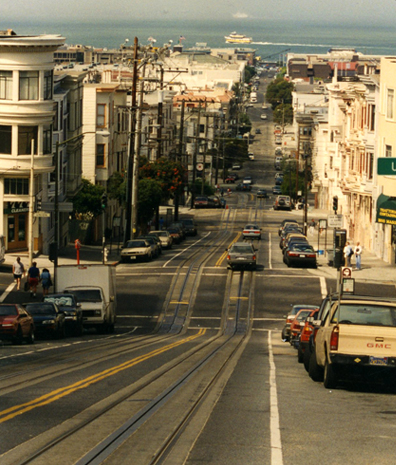 |
| San Francisco Bay Tour |
1994